
Apocalyptic and post-apocalyptic fiction is a subgenre of science fiction in which the Earth's civilization is collapsing or has collapsed. The apocalypse event may be climatic, such as runaway climate change; astronomical, such as an impact event; destructive, such as nuclear holocaust or resource depletion; medical, such as a pandemic, whether natural or human-caused; end time, such as the Last Judgment, Second Coming or Ragnarök; or any other scenario in which the outcome is apocalyptic, such as a zombie apocalypse, cybernetic revolt, technological singularity, dysgenics or alien invasion.

Alien invasion or space invasion is a common feature in science fiction stories and film, in which extraterrestrial lifeforms invade the Earth to exterminate and supplant human life, enslave it, harvest people for food, steal the planet's resources, or destroy the planet altogether. It can be considered as a science-fiction subgenre of the invasion literature, expanded by H. G. Wells's seminal alien invasion novel The War of the Worlds.

Strata is a 1981 science fiction comedy novel by Terry Pratchett. It is one of Pratchett's first novels and one of the few purely science fiction novels he wrote, along with The Dark Side of the Sun.

Ancient astronauts refer to a pseudoscientific set of beliefs which holds that intelligent extraterrestrial beings visited Earth and made contact with humans in antiquity and prehistoric times. Proponents suggest that this contact influenced the development of modern cultures, technologies, religions, and human biology. A common position is that deities from most, if not all, religions are extraterrestrial in origin, and that advanced technologies brought to Earth by ancient astronauts were interpreted as evidence of divine status by early humans.
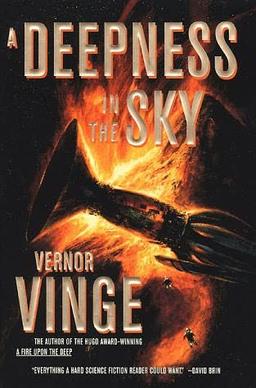
A Deepness in the Sky is a science fiction novel by American writer Vernor Vinge. Published in 1999, the novel is a loose prequel to his earlier novel A Fire Upon the Deep (1992). The title is coined by one of the story's main characters in a debate, in a reference to the hibernating habits of his species and to the vastness of space.
The Uplift Universe is a fictional universe created by American science fiction writer David Brin. A central feature in this universe is the process of biological uplift.
The Noon Universe is a fictional future setting for a number of hard science fiction novels written by Arkady and Boris Strugatsky. The universe is named after Noon: 22nd Century, chronologically the first novel from the series and referring to humanity reaching its noon in the 22nd century.
The zoo hypothesis speculates on the assumed behavior and existence of technologically advanced extraterrestrial life and the reasons they refrain from contacting Earth. It is one of many theoretical explanations for the Fermi paradox. The hypothesis states that alien life intentionally avoids communication with Earth to allow for natural evolution and sociocultural development, and avoiding interplanetary contamination, similar to people observing animals at a zoo. The hypothesis seeks to explain the apparent absence of extraterrestrial life despite its generally accepted plausibility and hence the reasonable expectation of its existence. A variant on the zoo hypothesis suggested by the former MIT Haystack Observatory scientist John Allen Ball is the "laboratory" hypothesis, in which humanity is being subjected to experiments, with Earth serving as a giant laboratory.

Camouflage is a 2004 science fiction novel by American writer Joe Haldeman. It won the James Tiptree, Jr. Award in 2004 and the Nebula Award for Best Novel in 2005.
The Matrix Quest is the official collective name for issues #62 through #66 in Marvel's Transformers comics, written by UK writer Simon Furman. Each chapter of the story pays homage to a classic movie or book.

First contact is a common science fiction theme about the first meeting between humans and extraterrestrial life, or of any sentient species' first encounter with another one, given they are from different planets or natural satellites. The theme allows writers to explore such topics such as xenophobia, transcendentalism, and basic linguistics by adapting the anthropological topic of first contact to extraterrestrial cultures.
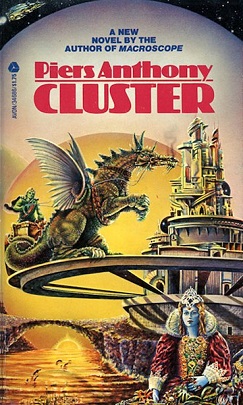
Cluster is a series of science fiction novels by Piers Anthony. Anthony originally conceived of and wrote the series as a trilogy but later added two additional volumes.
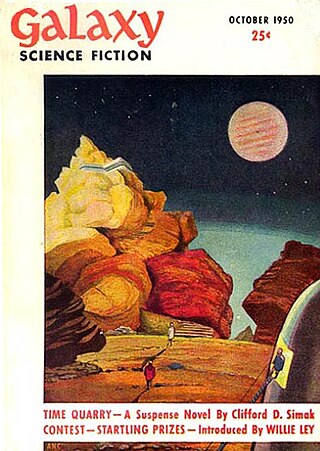
The planetary systems of stars other than the Sun and the Solar System are a staple element in many works of the science fiction genre.

Wheelers is a hard science fiction novel written by English mathematician Ian Stewart and reproductive biologist Jack Cohen. The book was originally released in hardcover form in the year 2000, and a more common paperback printing was begun in 2001. It has enjoyed modest commercial success and is perhaps best known for its conceptions of alien zoology and intelligence—hallmarks of Cohen's work as a consultant on exobiology for books, movies, and television.

Ancient astronauts have been addressed frequently in science fiction and horror fiction. Occurrences in the genres include:
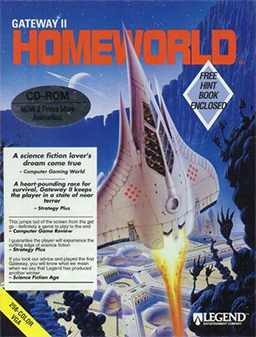
Gateway II: Homeworld is a 1993 interactive fiction video game developed and published by Legend Entertainment. The sequel to Gateway (1992), it is set in Frederik Pohl's Heechee universe.
The Color of Distance is a science fiction novel by American writer Amy Thomson, published in 1995 by Ace Books. It was nominated for a Philip K. Dick Award in the category Best Paperback Original Novel. The sequel is Through Alien Eyes.
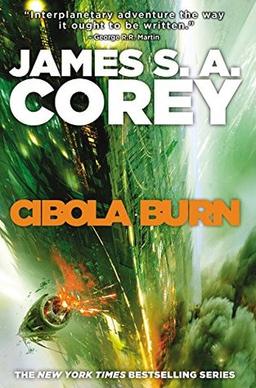
Cibola Burn is a 2014 science fiction novel by James S. A. Corey and the fourth book in The Expanse series. It follows the crew of the Rocinante as they join the flood of humanity out into the galaxy, using the gates built by the ancient civilization which also produced the protomolecule. Cibola Burn is heavily influenced by western stories, departing slightly from the previous themes of the series to tell a story of survival on the frontier. At the release of Cibola Burn, Orbit Books announced that James S. A. Corey would write three additional books in the series to bring the series to nine novels and various short stories. Cibola Burn serves as the basis for the fourth season of the television series The Expanse, which was released by Amazon Video December 13, 2019.

Death's End is a science fiction novel by the Chinese writer Liu Cixin. It is the third novel in the trilogy titled Remembrance of Earth's Past, following the Hugo Award-winning novel The Three-Body Problem and its sequel, The Dark Forest. The original Chinese version was published in 2010. Ken Liu translated the English edition in 2016. It was a finalist for the 2017 Hugo Award for Best Novel and winner of the 2017 Locus Award for Best Science Fiction Novel.

The Final Architecture is a series of science fiction novels by British writer Adrian Tchaikovsky. It comprises Shards of Earth, Eyes of the Void, and Lords of Uncreation. The series focuses on a group of humans fighting against the mysterious Architects, who destroy inhabited planets. The series has been well-received critically, with Shards of Earth winning the 2021 BSFA Award for Best Novel.















